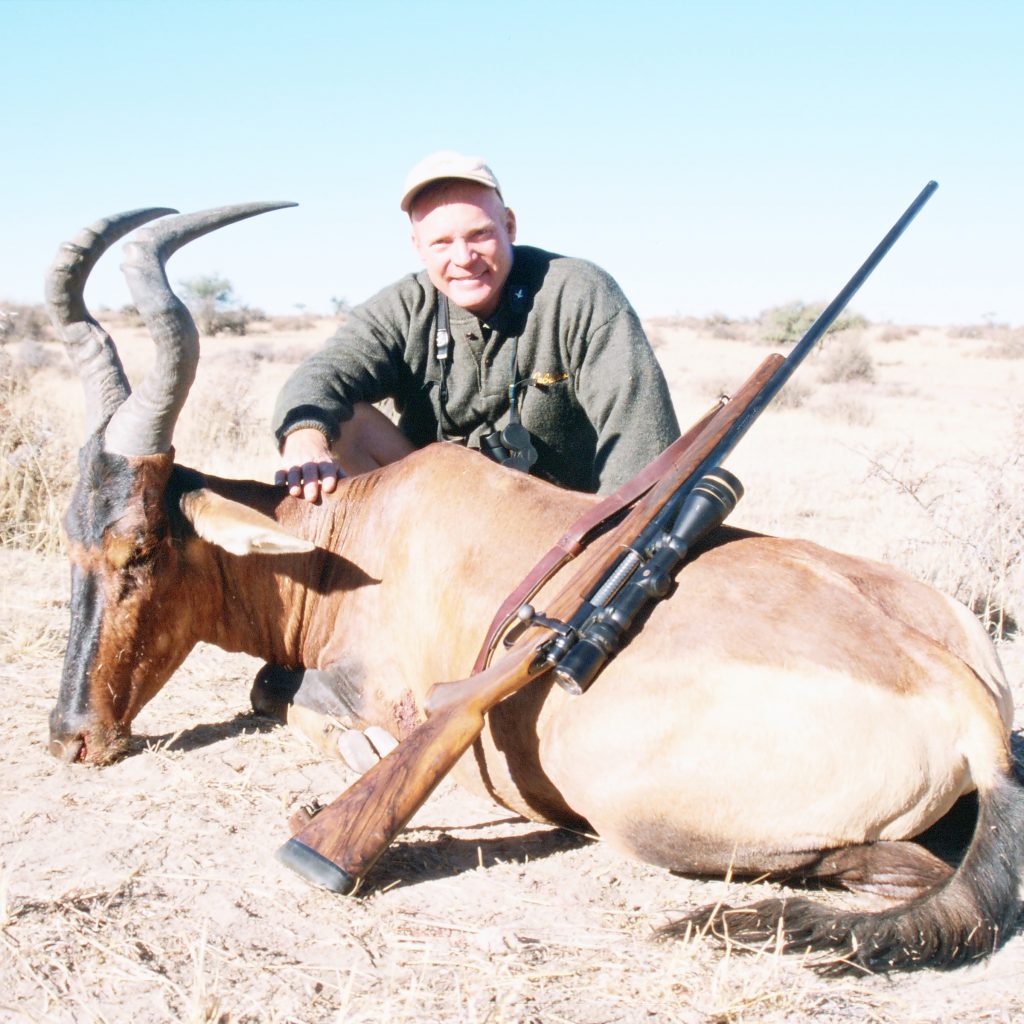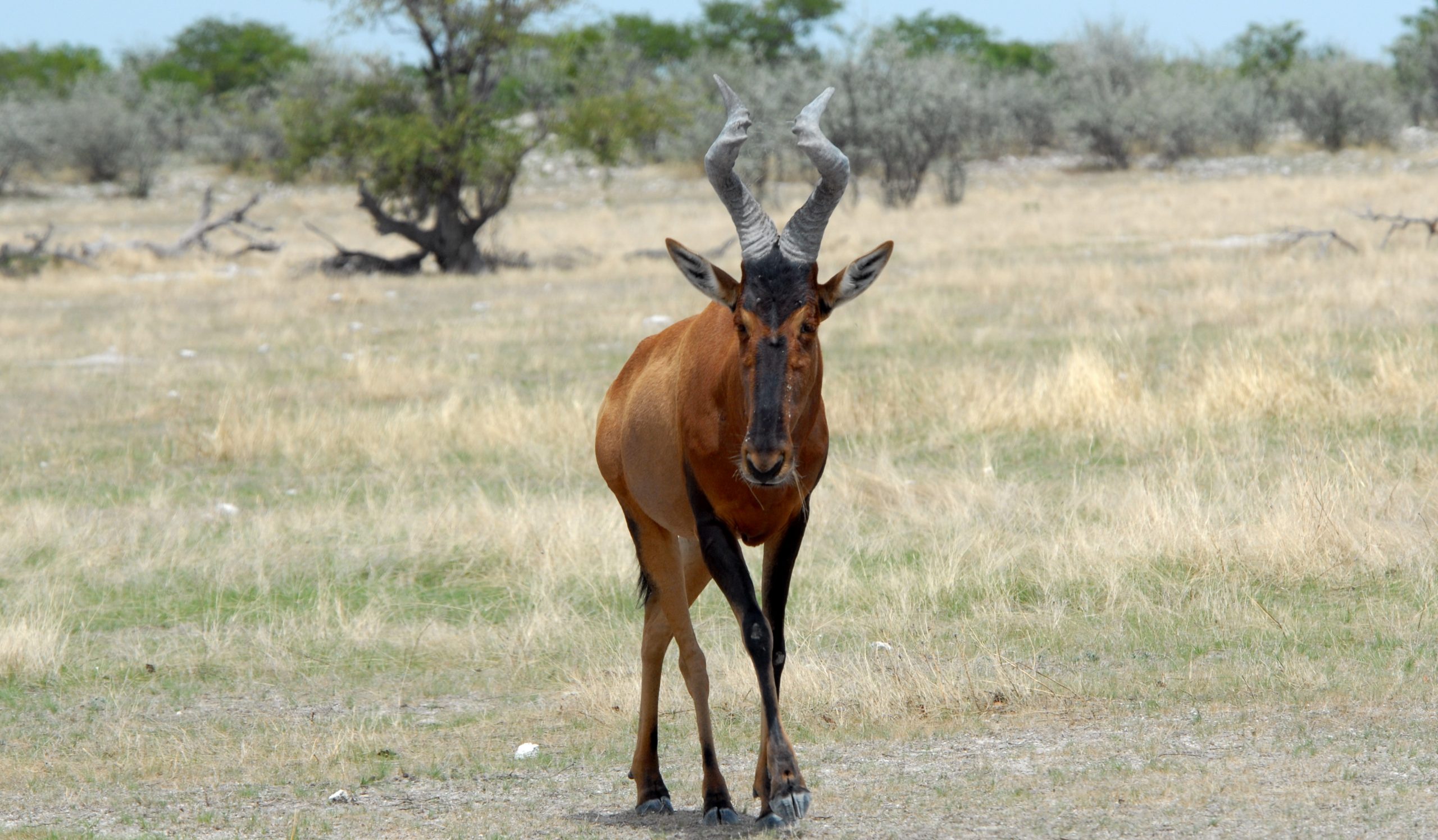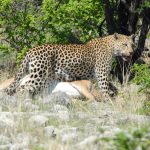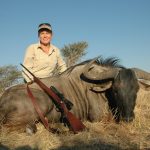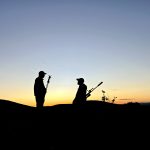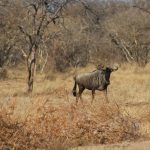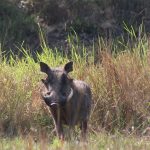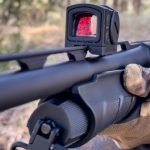It may not be the most beautiful of Africa’s plains game, but the hartebeest is fascinating and challenging to hunt.
Photo above: A Cape hartebeest. Photo by Dirk de Bod
Among the millions of words I’ve written about African hunting, this is the first piece I’ve devoted specifically to the hartebeest. This is odd, because I’ve spent a lot of time hunting and observing them, and, on most safaris anywhere in Africa, one or another hartebeest is likely to be encountered.
Long-legged and tall in the shoulder, the hartebeest is not among Africa’s more beautiful antelopes. But its thick horns, usually with sharp turns (rather than smooth curves) are unusual and interesting. So is the animal. With a distinctive “pogo-stick” gait (much like the stott of a mule deer), the hartebeest clan is among the fleetest of antelopes, especially over distance, and they are usually wary and difficult to approach.
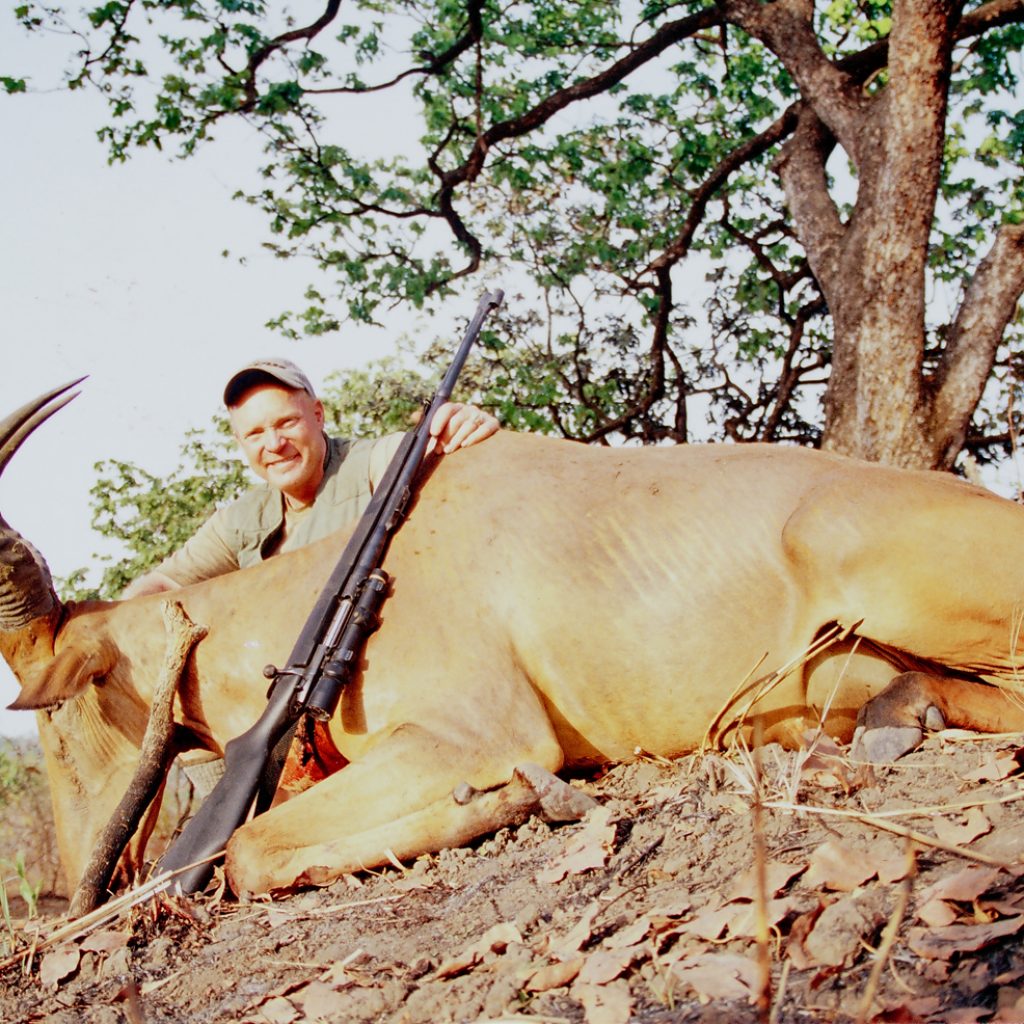
Relying primarily on vision and mobility for security, the hartebeest prefers open plains or mixed thornbush. Always a grazing herd animal, primary requirements are grass and water. They are not found in the forest zone, and although they do fine in semi-arid country, they are not found in the Sahara. Otherwise, one or another hartebeest is found in most hunting areas. Top to bottom and east to west, the various races of hartebeest (genus and species Alcelaphus bucelaphus) are probably the most widespread of Africa’s large antelopes.
The hartebeest appears slab-sided, narrow through the chest, so they are deceptively heavy. Bulls of the plentiful Cape hartebeest race of southern Africa weigh about 350 pounds. The East African races average a bit smaller, while the hartebeest of Central Africa are the largest, with mature bull up to 450 pounds.
As is often the case with species that have multiple similar races, science and our various hunters’ record-keeping systems aren’t always in accord. However, science and the venerable Rowland Ward book are pretty well in sync, identifying eight “genuine” subspecies. The type specimen, the Atlas or bubal hartebeest, was most recently confined to the Mediterranean coast from Tunisia to Morocco. This has been a tough neighborhood for wildlife, and this race became extinct about 1930. Also questionable is the tora hartebeest, found along the Blue Nile where Eritrea, Sudan, and Ethiopia join. At best, numbers are very low, and some authorities believe this hartebeest is also gone.
The six races currently huntable are: red or Cape hartebeest, common in Namibia, South Africa, and Botswana; Lichtenstein hartebeest, from central Tanzania south through Mozambique and southwest through Zambia; Coke hartebeest (kongoni in Swahili) from northern Tanzania up through central Kenya; Lelwel hartebeest from Uganda westward to northern Cameroon; and western hartebeest on west to Senegal. All of these hartebeests occupy large ranges and, in general, are not scarce. There is also the Swayne hartebeest, still huntable, but with local distribution in Ethiopia’s Rift Valley.
Complicating things, there are also natural hybrids where major subspecies come together. Neumann hartebeest is a natural hybrid between Swayne and Lelwel, hunted in southwestern Ethiopia; and the Kenya highland hartebeest (not hunted since Kenya closed) is a natural Coke-Lelwel cross. Jackson hartebeest is probably also a Coke-Lelwel cross, occurring from northwestern Kenya into Uganda. Locally, hartebeest in eastern Uganda are called Jackson, but record-keeping organizations consider them Lelwel.
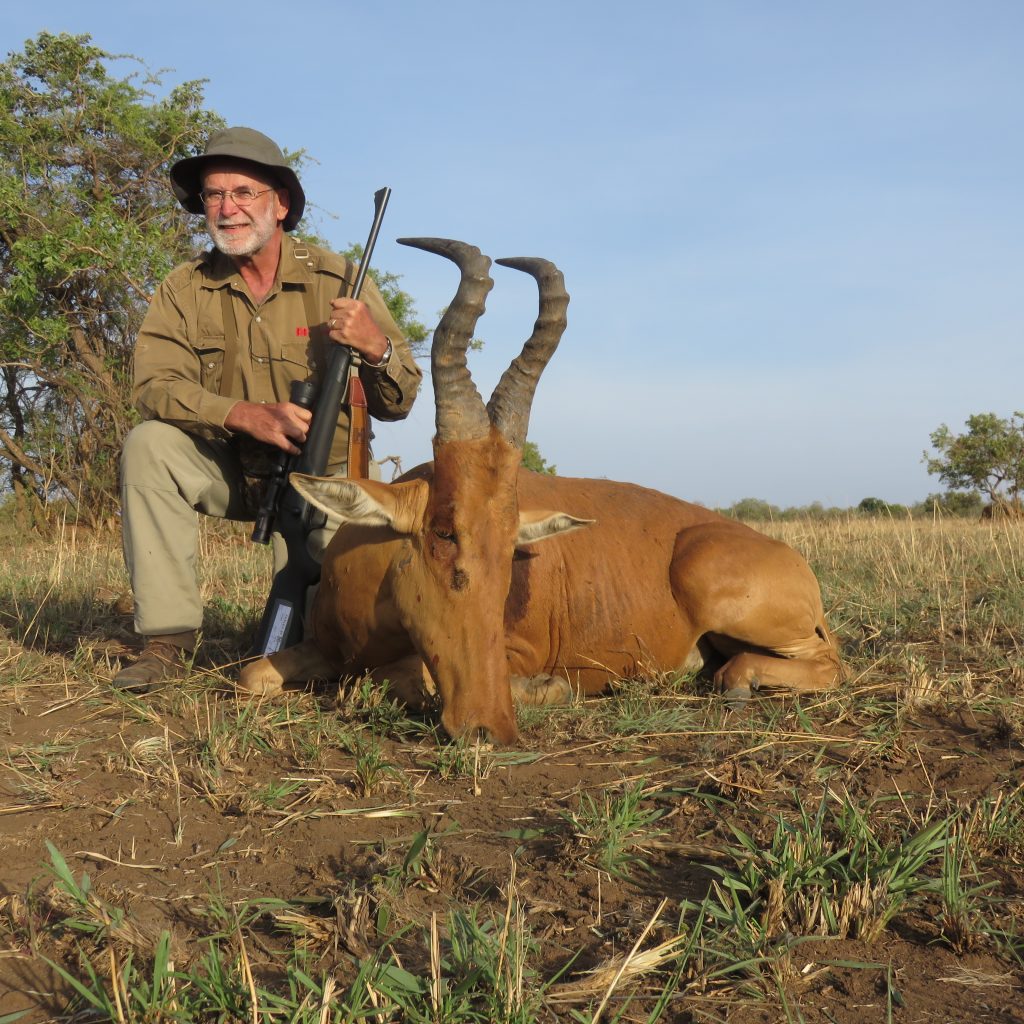
Among the races, normal horn conformation and body color are distinctive, but with too much variance to always be definitive. Cape hartebeest are typically dark mahogany, with thick horns that grow up and back, then bend forward, and finally turn sharply back. Lichtenstein hartebeest are lighter in color, with short, thick horns that typically end with near-parallel tips. The Coke hartebeest, which I only hunted in Kenya, is reddish-tawny with lighter legs and hindquarters, and the weirdest horns of all, growing up and outward, and then turning abruptly up or back. The Lelwel hartebeest is similar in color, but larger, with horns more similar to the Cape variety. Western hartebeest are more uniformly tan, though distinctive with a while line between the eyes, with massive horns, U-shaped from the front, and ending with backward-pointing tips.
Both males and females carry similar horns, so judging is tough. On bulls, the penis is quite far back and not always readily visible, and vegetation often obscures this irrefutable evidence. It takes experience; you must look at many to get the hang of it. The primary means to locate a bull is mass of the horn bases, often almost completely grown together. Females can have impressive horns, but never with the mass.
Regardless of race, hunting hartebeest is a matter of painstaking glassing and then a careful approach, keeping out of sight until within range. When hunting from horseback was common, early hunters noted that, when approached, hartebeest would seem to drift slowly away, but their ability to cover ground was deceptive: The horses would be worn out before any distance was closed. Provided there’s enough cover, whether vegetation or terrain, my experience is you can often close for a shot–the first time. If that doesn’t work, unless you’re desperate for camp meat or a bull appears really spectacular, once hartebeest start drifting away, it’s wiser to wave off and keep looking.
I’ve waved off lots of times, but it never hurts to try. We see a lot of hartebeest out on the floodplains of Mozambique’s Coutada 11. Sometimes distribution of African animals makes no sense: This area is below the Zambezi, which is a major natural barrier. So, I’ve always thought the hartebeest there should be the Cape hartebeest of southern Africa, but they are pure Lichtenstein, stockier and lighter in color. They’re plentiful, but horns are rarely huge. One morning Mark Haldane and I saw a giant, heavy with amazing tips, huge for a Lichtenstein. Well, of course we had to have him, but he was in a big group way out on the floodplain, zero cover and windy. We tried a half-dozen approaches; I don’t think we got within 600 yards.
We let them drift off and settle down, and started walking toward them at an oblique angle, carrying two sets of sticks. Amazingly, we closed to 375 yards. With one set of sticks under the butt, the other under the fore-end, I held a bit high and a bit more into the crosswind and dropped him with a Blaser .270.
Because hartebeest tend to be open-country herd animals, identifying and isolating a bull for a shot is often the hard part, and they are nervous, seeming to have a longer “flight” radius” than many antelopes. So, shots tend to be longer. I’ve taken a fair number beyond 300 yards, farther than usual for shooting in Africa, and always because that’s as close as we could get! That said, I’ve never considered hartebeest especially hardy. Any accurate, well-scoped plains game rifle from 6.5mm to .30-caliber should work fine, and I’ve taken several with 7mms and .270s because those are favorite calibers I often carry.
Since they are relatively narrow through the chest, given a choice I prefer bullets that open fairly quickly but, like everything else, it’s more a matter of shot placement than precise caliber or bullet. And, if shot placement is poor, a hartebeest can give you a long day. Years ago, in the Selous, hunting with Cliff Walker, I made a bad shot on a Lichtenstein hartebeest. The trail took us into a dense thicket line and led us on and on. We jumped the animal several times, too thick to shoot, and now we were losing daylight, and we lost the spoor. I cast one way, Cliff another. The bull jumped up just in front of him and he dropped it at about ten feet with his .577 double. That worked, but usually hartebeest don’t require quite that much power.
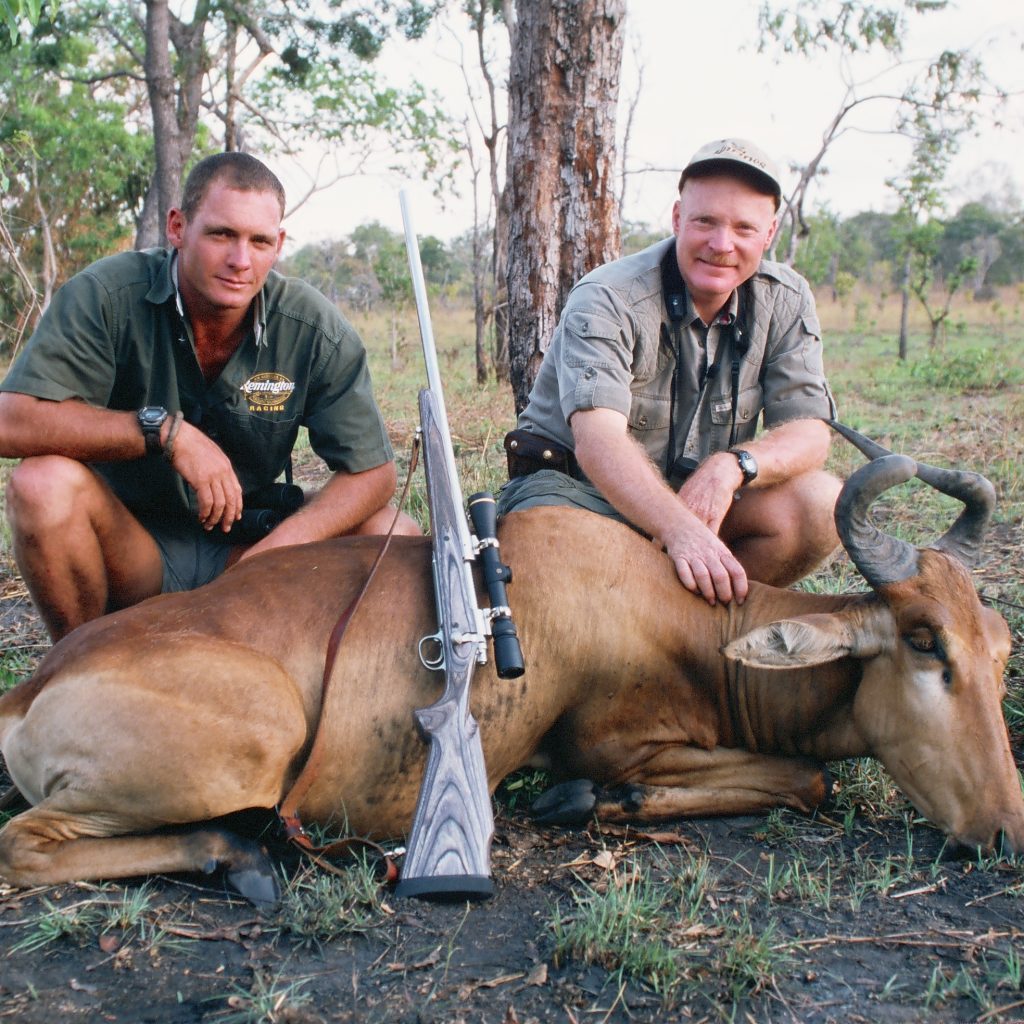
A hartebeest isn’t usually a difficult antelope to find, but density varies widely. Across several safaris to C.A.R. I never had a chance at a Lelwel, although I finally got a “Jackson” in Uganda. Pretty much the same with western hartebeest: Saw few in northern Cameroon and almost none in Burkina Faso, seemingly the least common of the large antelope present, but I did get a good one on my third hunt in Cameroon. Although the books say the Lelwel is the largest-bodied hartebeest, the one western hartebeest I’ve walked up to was a giant, massive in the body, but that’s the only one I’ve seen up close.
In Mozambique, we can go to the floodplain on any day and see plenty of hartebeest. This is also true of many areas in southern Africa, but some places and times are better than others. Years ago, I was with Dirk de Bod in central Namibia and he told me there was a hartebeest migration passing through just behind the Windhoek International Airport, at the time (and maybe still) an unfenced area. We spent a day there, and there were hartebeests everywhere: Big herds, small groups, hundreds! The end result was obvious so we took our time, looked around, and I got my best-ever Cape hartebeest. Getting a good hartebeest generally isn’t a mission, but it’s usually not quite that simple.
